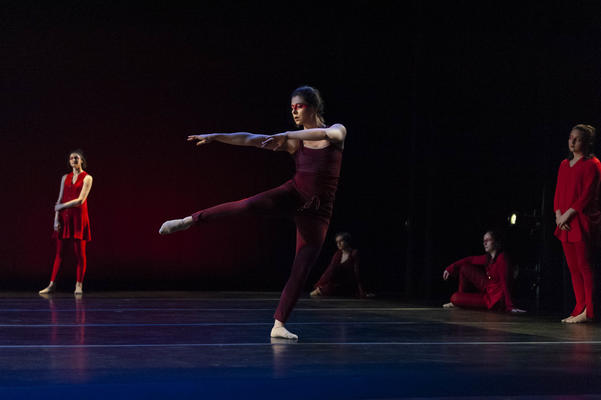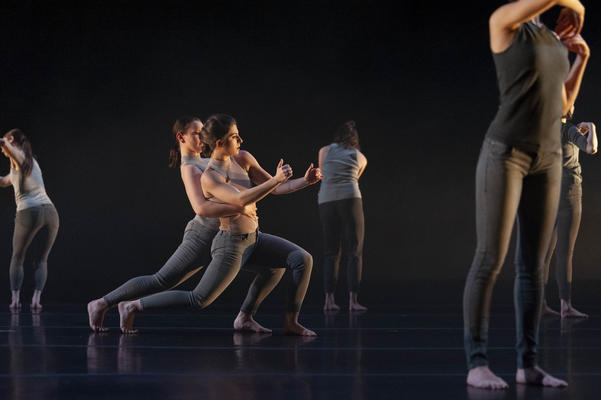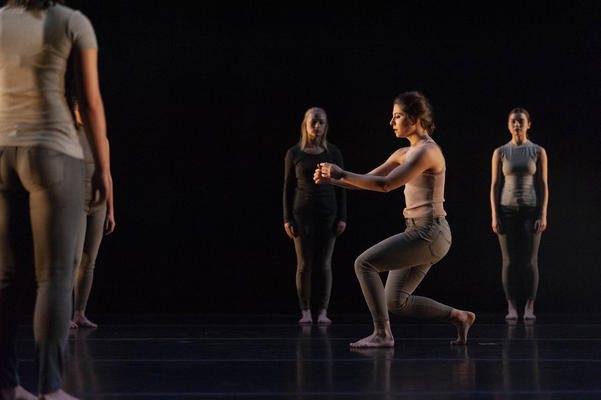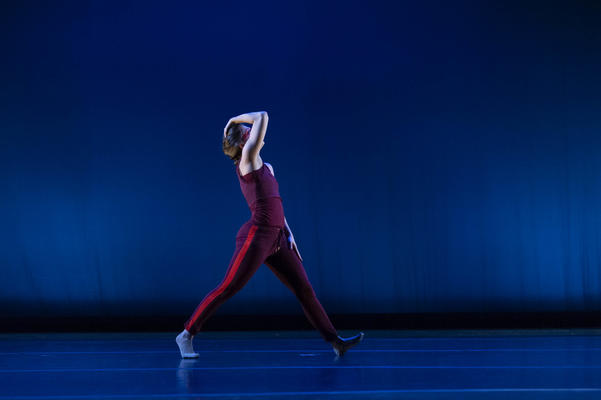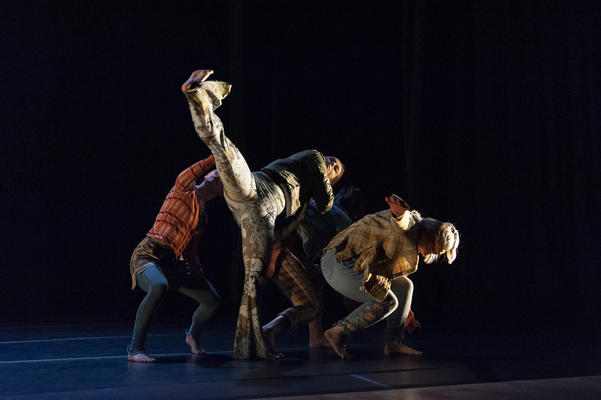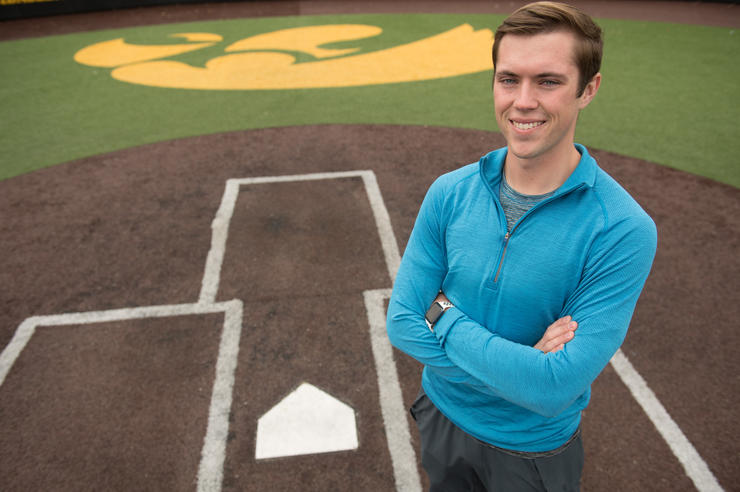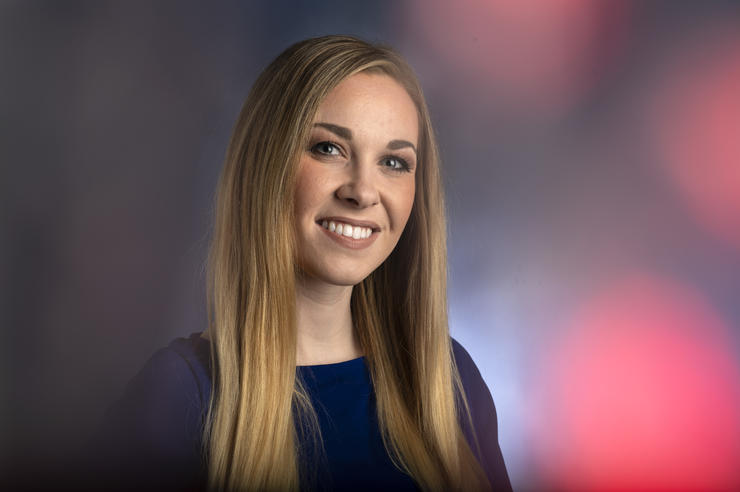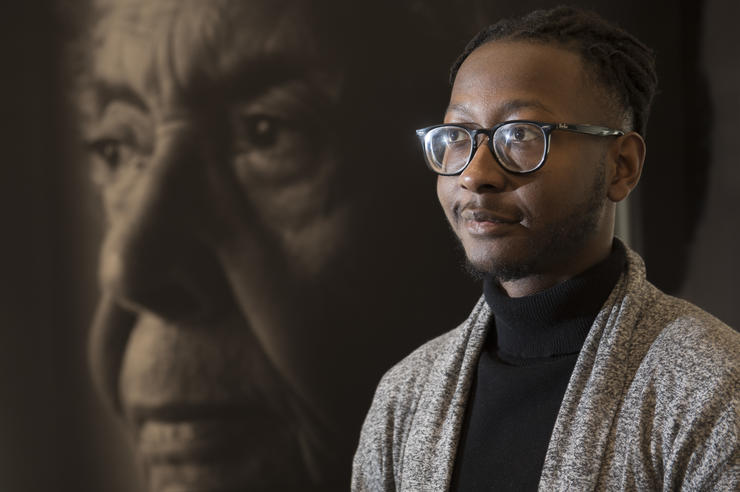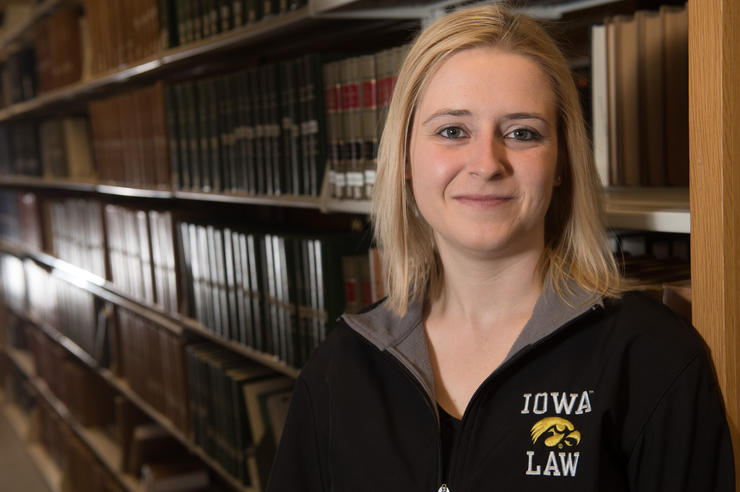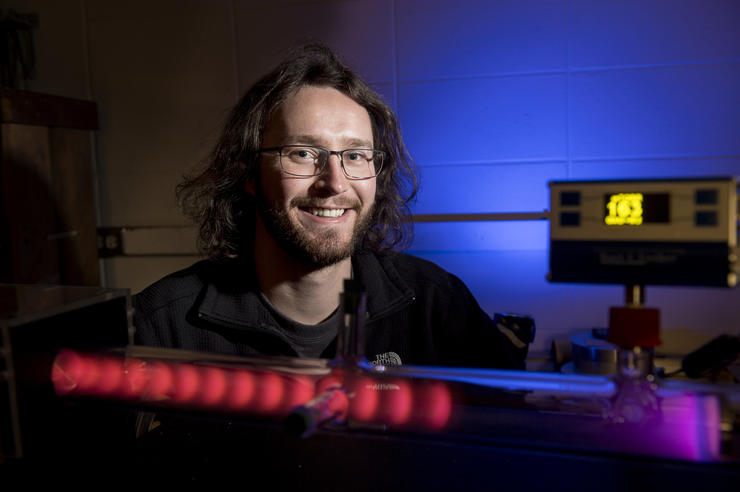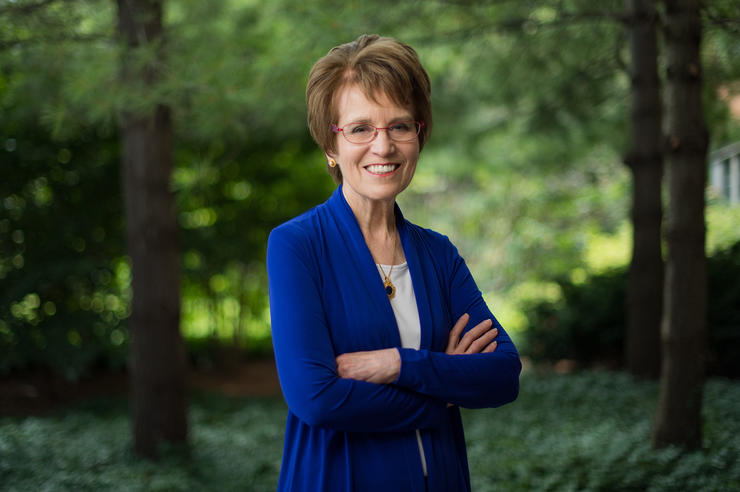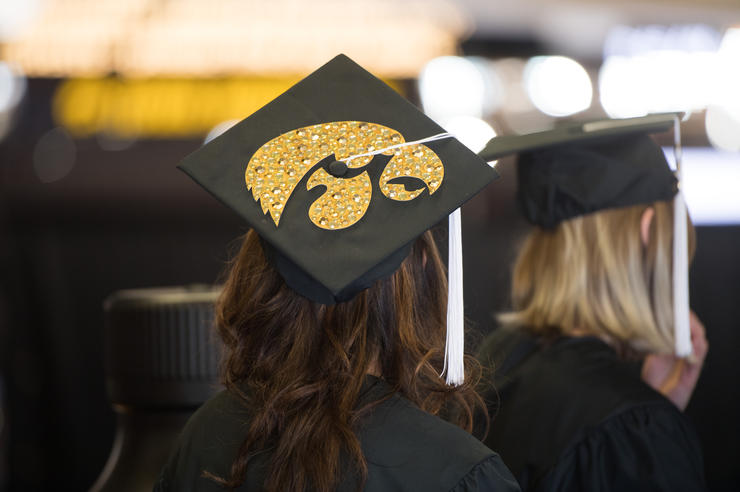Making discoveries in the lab and dance studio
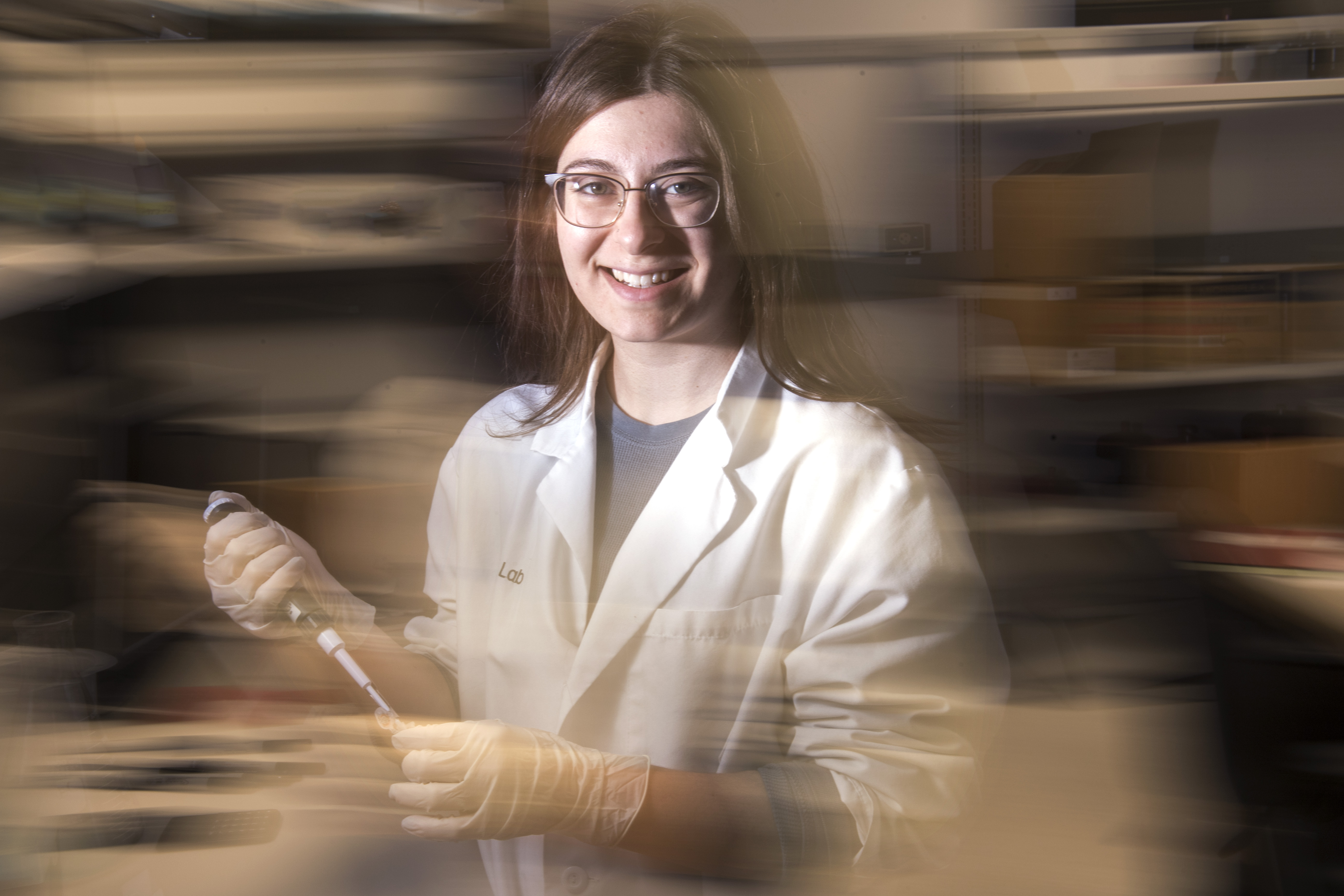
Degree: Biomedical sciences and dance
Hometown: Cedar Falls, Iowa
Plans after graduation: “Join the Cellular and Molecular Medicine Graduate Program in the School of Medicine at Johns Hopkins University, where I will work toward my PhD. I also plan to experiment with the ways that dance can function as a form of scientific education or scientific communication.”
Biomedical sciences and dance at first glance may seem to have little to do with each other. But Mikaela Mallin, who graduated from the University of Iowa with degrees in both, sees plenty of connections.
The Cedar Falls, Iowa, native graduated in May 2019 with a double major in biomedical sciences and dance. Mallin says the two disciplines have more in common than you might think.
“The core principles of dance research and scientific research—which people tend to ‘believe’ in more—are similar,” Mallin says. “They have the same end goal of new knowledge acquisition. Perhaps the methodologies of the research look different, but the epistemologies and ontologies are actually quite similar.”
Mallin started at Iowa as a premedical student with the goal of becoming a physician or surgeon. During her first year, she was introduced to the Iowa Center for Research by Undergraduates (ICRU), which matched her with a lab run by Robert Cornell, professor of anatomy and cell biology and vice chair for research in the Roy J. and Lucille A. Carver College of Medicine.
“After becoming involved in undergraduate research in Robert Cornell’s lab, I realized that research that benefits the medical community or provides medical advancement was the field that I wanted to go into,” Mallin says. “I didn’t initially realize how much research was happening at the University of Iowa.
Being able to be involved in such groundbreaking work from such a young age has been a really fruitful part of my undergraduate experience and guided me to know what I want to do in the future.”
In Cornell’s lab, Mallin works with other researchers to understand the genetic causes of the skin cancer melanoma by investigating the gene-regulatory network responsible for the development of melanocytes in zebrafish.
“I think of it as red light/green light signals within our DNA,” Mallin says. “When we have too much green light, or go signal, it can lead to an overgrowth of skin cell tissues, which can become cancerous. We use zebrafish—which can develop skin cancer in the same way that humans can—to study these stop and go signals to better understand the genetic components that can predispose certain individuals to develop melanoma.”
Mallin says she initially was paired with a PhD student working on her thesis project, from whom she learned basic lab techniques, including experimental and safety protocols. Over the past couple of years, she started to ask her own questions and design her own experiments.
“Mikaela asks very intelligent and curious questions. She doesn’t accept the status quo. She’s also really grown as an artist in the last four years and is at the top of her game. She’s a woman in demand.”
“I love that the work is never done,” Mallin says. “Every time I find an answer to something, that answer leads me to pose the next question. I think there’s something special about continuing this scientific lineage. There are researchers before me that discovered key pieces of information that I am using as fundamental building blocks for my research. And the things that I discover in my lifetime will be key fundamental blocks for future generations of scientists.”
Cornell says Mallin’s upbeat personality belies the fact that she is unusually focused.
“When in the lab, she works without becoming distracted,” Cornell says. “She generated an interesting set of results regarding the genetic regulation of pigmentation in zebrafish, and she presented them on a poster at an international meeting on melanocyte biology. She was the only undergraduate in attendance. She has the right stuff to become a successful independent investigator.”
While Mallin danced throughout high school, she didn’t initially plan to continue with it in college, instead focusing on her scientific endeavors.
“After only a semester, I realized I missed having dance in my daily life,” Mallin says. “Dance is really important to me and it’s something that is really instrumental to the way I think and operate and act in the world. So, I took a couple of dance classes on the side, and that quickly turned into a minor, which turned into a major.”
Along with studio classes and performing, Mallin has worked closely with Rebekah Kowal, associate professor of dance and chair of the Department of Dance, to study how international dance forms acted as agents of social, cultural, and political change in 1940s America.
Kowal says Mallin came to her attention during a course she taught, where Mallin impressed her with her writing and her contribution to the class environment.
“She asks very intelligent and curious questions. She doesn’t accept the status quo,” Kowal says. “She’s also really grown as an artist in the last four years and is at the top of her game. Lots of choreographers want to work with her. She’s a woman in demand.”
Mallin says people are often surprised or confused by the notion of “dance research.”
“It’s often a new idea for many people that dance can have roles and perform functions outside of entertainment and exercise,” Mallin says. “The truth is that dance doesn’t live in a vacuum, independent from the world it was created in, and so reflections of humanity manifested as political and social underpinnings are always going to be present, whether a choreographer intended for them to be clearly legible or not. Once we understand dance as an agent of social and political change, we can begin to appreciate how and why it can and should be researched.”
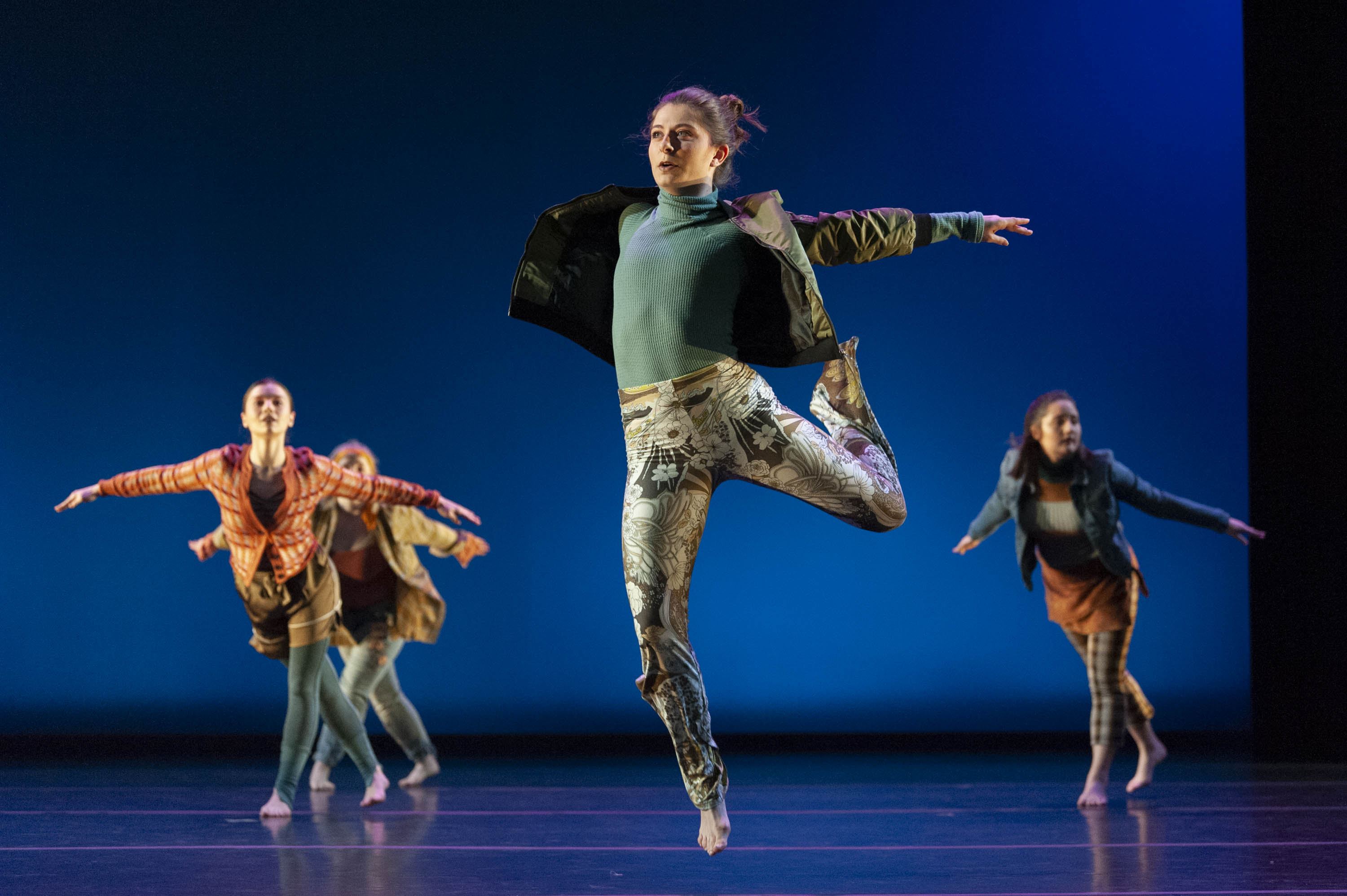
Some of Mallin’s favorite memories of her time at the UI revolve around dance, particularly working the last two years with Dancers in Company (now named UI Dance Company), the UI’s premier touring ensemble. Participating in the process of creating a concert, workshops, and public discussions around a theme—collective action last year and equity and inclusion this year—led her to think more about how dance and science can interact.
“Producing work with Dancers in Company allowed me to begin to understand how dance can function as a form of community engagement, outreach, education, and communication,” Mallin says. “Those experiences got me thinking that maybe I can translate that to a scientific realm and create dances about science that allow audience members to participate in or become involved in scientific questioning.”
While researching PhD programs in cancer biology, Mallin says she also looked for places with robust science outreach organizations that will allow her to experiment with the ways that dance can function as a form of scientific education or scientific communication.
Mallin says the research opportunities open to her at the UI greatly enriched her undergraduate experience, giving her the chance to present her work at conferences across the country and travel to India to work in a hospital over winter break.
She says she values the opportunity to share her experiences and her excitement for research with other students and the wider public. She has done this as an ambassador for ICRU, an undergraduate biology teaching assistant, research mentor for the Secondary Scientist Training Program, and a presenter at annual Research in the Capitol and Legislators in the Lab events.
As Mallin’s undergraduate experience comes to an end and she heads to Johns Hopkins University, where she’ll work toward her PhD in the Cellular and Molecular Medicine Graduate Program in the School of Medicine, she has advice for current and future students.
“Don’t give up on your art or hobbies because you’re swamped with classes,” Mallin says. “Save time in your schedule for your music, your sport, your art, or whatever is exciting to you and refuels and rejuvenates you. You might find that it informs the academic side of you in a really awesome way.”
